INTRODUCTION
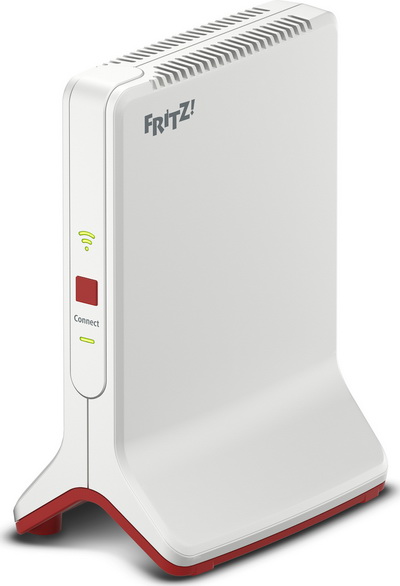
Wireless connectivity (Wi-Fi) may not be the most secure way to access the internet and share data but there's no denying that it has come a long way since the very first 802.11 legacy (data rate of 1/2Mbps) compatible devices were released into the market just over two decades ago. Just imagine that since then we've witnessed the development and release of not one but roughly a dozen new and updated Wi-Fi protocols the most popular of which are without doubt the 802.11g released back in 2003 (data rate of up to 54Mbps), 802.11n released back in 2009 (data rate of up to 600Mbps) and the 802.11ac released back in 2013 (data rate of up to 2167Mbps). Still even though the different in maximum theoretical data rates between protocols is vast to say the least wireless range hasn't evolved nearly as much and even though most modern modem/routers are outfitted with several high-gain antennas that's not enough to cover large indoor areas. This is where Wi-Fi repeaters come in and so today we'll be testing the latest model by our friends over at AVM, the FRITZ!Repeater 3000.
AVM offers an extensive selection of products for high-speed broadband connectivity and smart home networking. With the FRITZ! product range, AVM is a leading manufacturer of broadband devices for DSL, cable, LTE (4G) and fiber optics in Germany and Europe. Our Smart Home products, based on wireless LAN, DECT and powerline standards, ensure an intelligent and secure home network. Thanks to the FRITZ!OS operating system, FRITZ! products are intuitive and easy to use. Regular free updates provide new functions for greater convenience and increased security. FRITZ! is the leading brand for home networking in Germany. Since it started out in Berlin in 1986, AVM's focus has been on developing secure, innovative products for broadband connections in-house. In 2018 the communications specialist had over 750 employees and generated a turnover of 520 million euros.
The FRITZ!Repeater 3000 is not only the latest Wi-Fi repeater model to reach our lab, it's also the largest one due to all the hardware components AVM decided to squeeze inside. Specifically inside the large white and red plastic enclosure of the FRITZ!Repeater 3000 AVM paired the Qualcomm IPQ4019 quad-core ARM Cortex A7 SoC (717MHz / Wave-2 802.11ac WiFi 5 / 2x2 Stream MU-MIMO) together with the QCA9984 Wave-2 802.11ac radio again by Qualcomm (4x4 stream / MU-MIMO / 160MHz), 6 antennas, 256MB DDR3L SDRAM and 128MB of NAND flash. The 3 available radios allow the FRITZ!Repeater 3000 to simultaneously offer wireless speeds of up to 1733Mbps on the 1st 5GHz band, 866Mbps on the 2nd 5GHz band and 400Mbps on the 2.4GHz band (totalling to 2999Mbps which is also where the product gets its name from). In terms of available technologies the FRITZ!Repeater 3000 fully supports AVM's Mesh WiFi, MU-MIMO (multi-user, multiple input, multiple output), beamforming (TxBF) and Qualcomm's Wi-Fi SON (self-organizing network) and also features two Gigabit Ethernet LAN ports where you can connect your desktop and/or laptop computers or even a switch.
SPECIFICATIONS AND FEATURES

PACKAGING AND CONTENTS
AVM has once again used their typical blue box at the front of which we find a product picture, the FRITZ! logo and the main product features.
A drawing located on the left side of the box showcases the proper topology for this product.
The setup steps are printed on the right side of the box.
The complete features list is available at the rear of the box in 6 languages.
Thanks to an extra piece of cardboard the FRITZ!Repeater 3000 is sufficiently protected during shipping.
Along with the FRITZ!Repeater 3000 and its power adapter you're also getting a RJ45 slim ethernet cable, product catalogue and the user manual.
THE FRITZ!REPEATER 3000 EXTERIOR
As mentioned earlier the FRITZ!Repeater 3000 is quite large and so its glossy plastic enclosure measures 184mm in height, 136mm in length and 88mm in width.
At the front of the enclosure we find the signal strength LED (helps you find the proper distance between your modem/router and the repeater), connect button and the connection status LED.
The top is perforated to allow hot air to exit the interior of the unit.
Turning the FRITZ!Repeater 3000 around we find the two RJ45 ethernet ports.
The network key and product serial number are printed on a sticker located on the base of the repeater right next to the power port.
THE FRITZ!REPEATER 3000 INTERIOR
Removing the plastic enclosure to access the interior components is very easy.
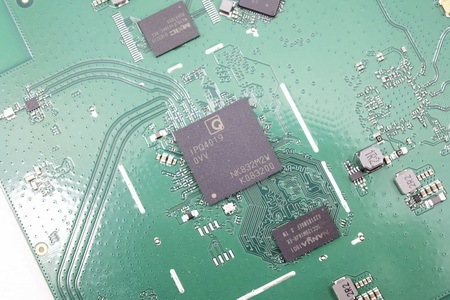
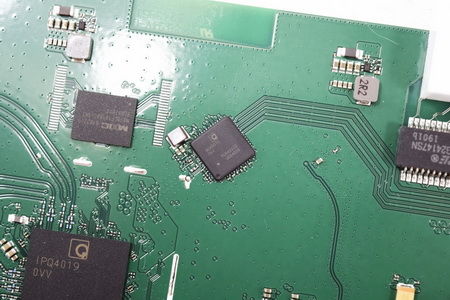
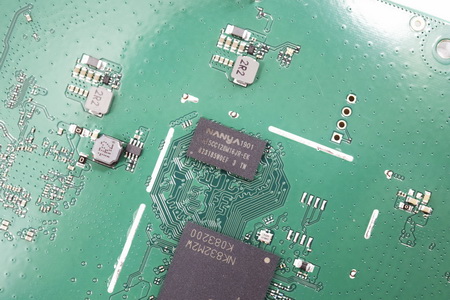
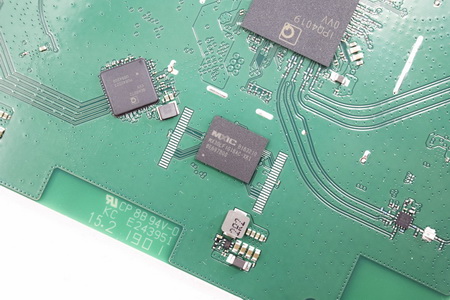
On the right side of the PCB we find the IPQ4019 quad-core CPU and the QCA8072 dual-port 10/100/1000Mbps ethernet transceiver by Qualcomm along with two Nanya DDR3L modules (128MB each) and a Macronix NAND flash memory module (128MB in size).
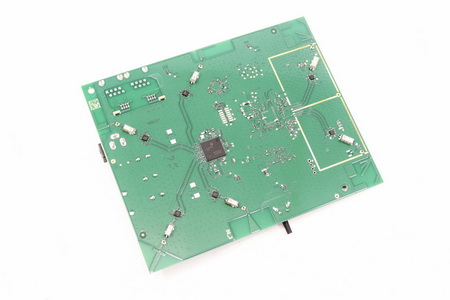
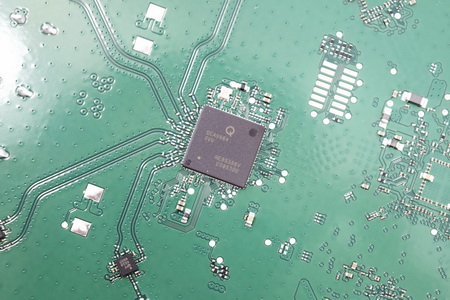
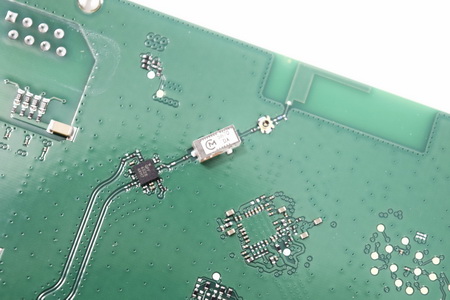
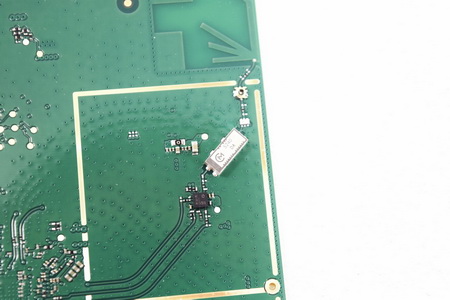
The left side only has the QCA9984 Wave-2 802.11ac radio and 6 integrated front end modules by Quorvo complete with their very own 2.4/5GHz antennas.
SETUP
To pair the FRITZ!Repeater 3000 with your modem/router you just need to press the connect button and then the WPS button on your modem/router (the how long you will need to press the WPS button depends on the model).
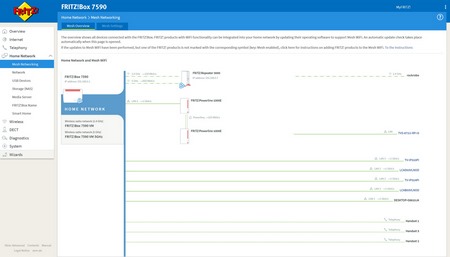
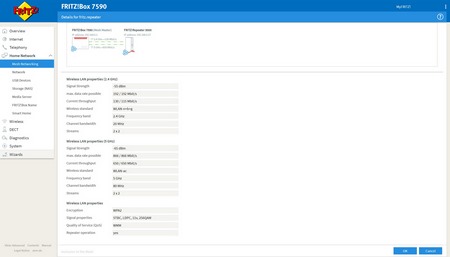
If you happen to own an FRITZ!Box you can check the details on the FRITZ!Repeater 3000 from the Mesh Networking tab as seen above.
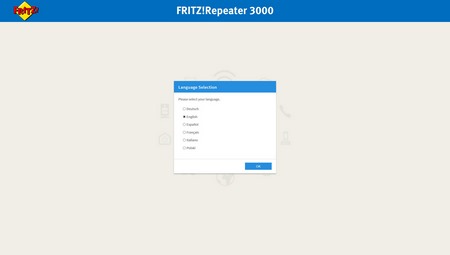
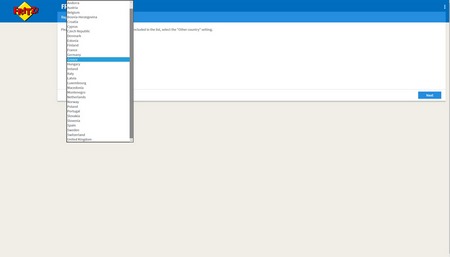
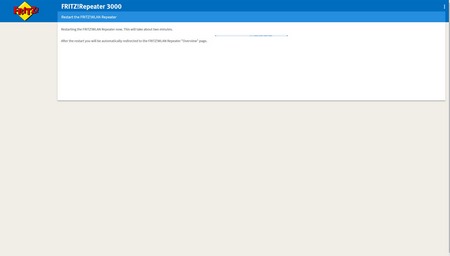
To complete the setup procedure we suggest using the web interface from where you need to choose your preferred language and location/country (this part is only necessary if you want to have more control over the features of the FRITZ!Repeater 3000).
FRITZ!OS 7.12
The main tab of the FRITZ!OS showcases the status of the FRITZ!Repeater 3000.
You have two options from the access to home network tab, either copy/adopt the settings from your modem/router onto the FRITZ!Repeater 3000 (recommended setting) or you can choose different settings starting from a different SSID.
From the same tab you can also configure the FRITZ!Repeater 3000 as a wired LAN bridge.
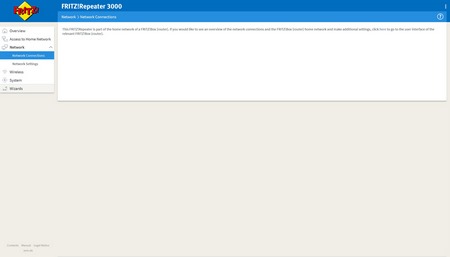
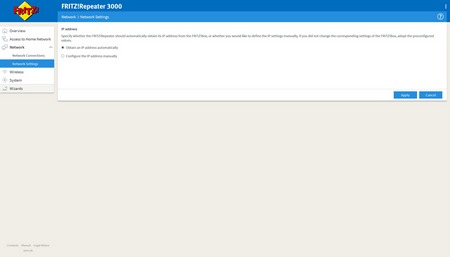
Inside the network tab you can check the current connections to the FRITZ!Repeater 3000 (unless it's part of a Mesh network which in our case is) and choose whether you want it to accept an IP address automatically (DHCP via your modem/router) or set a specific/static one.
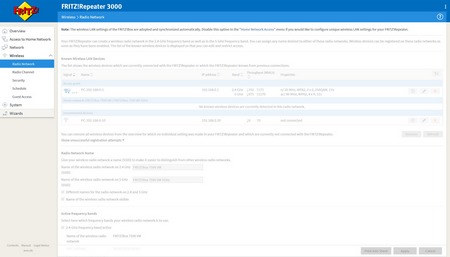
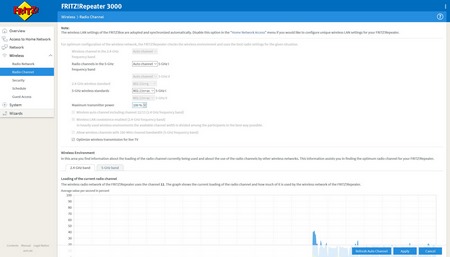
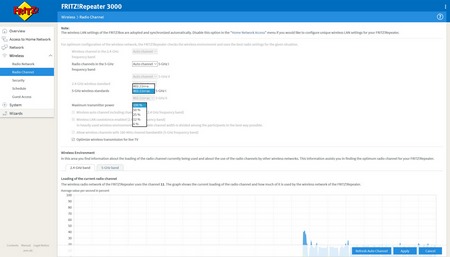
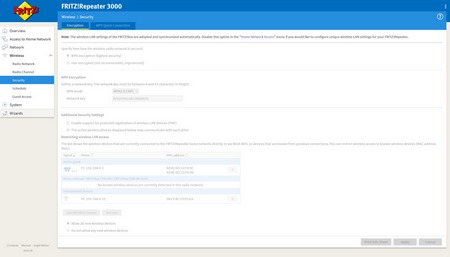
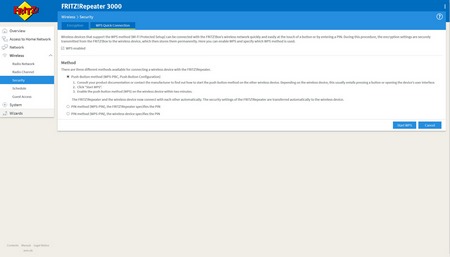
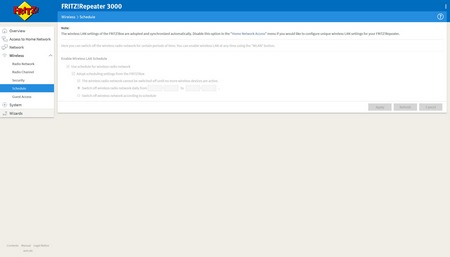
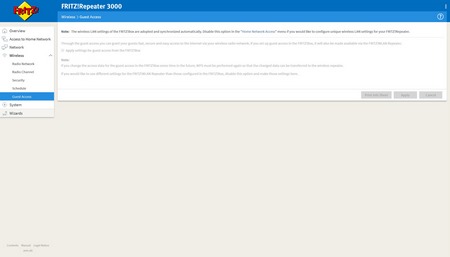
Within the wireless tab you can change the SSID, enable/disable bands, manually set channels, adjust the signal strength, set the preferred WPA mode and password, use the schedule function and enable/disable guest access (of course again if the FRITZ!Repeater 3000 is connected to an FRITZ!Box and you choose the adopt function most of these are greyed out).
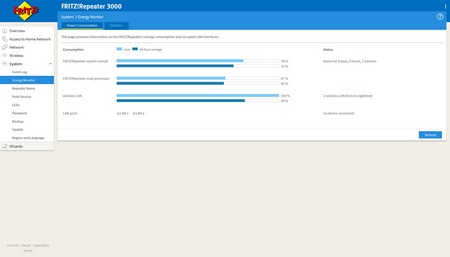
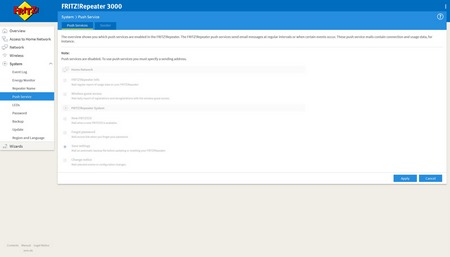
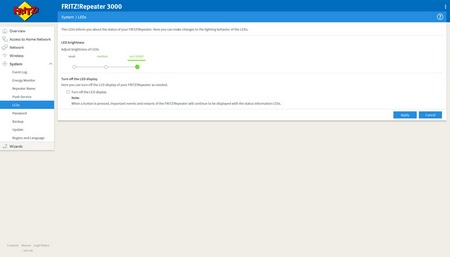
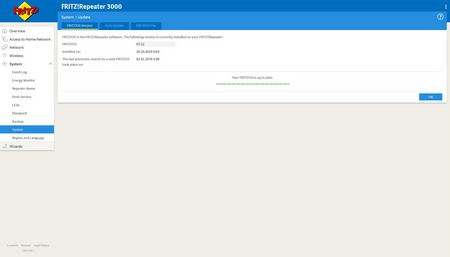
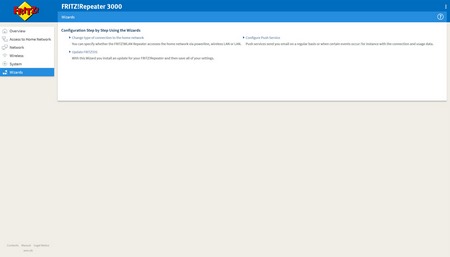
The system tab allows you to check the logs, power consumption and statistics, change the name of the device, use push services, adjust the brightness of the LEDs, set the web GUI password, backup/restore settings, perform a firmware update (we recommend using this instead of the Mesh function from your FRITZ!Box router since in our case only here did the new firmware version appear) and use one of the available wizards.
TESTING METHODOLOGY
For repeaters/range extenders we will be using part of the same testing methodology as we do for modem/routers and powerline adapters so once again we will be using the networking benchmark software by Passmark (v.8), QCheck software by Ixia and ATTO v2.47 to test 5GHz wireless signal strength and quality. For our tests we're using not only both our primary desktop systems (outfitted with Kingston HyperX Predator 480GB PCIe SSDs, AC1900 USB 3.0 adapters- AC1300 effective on the 5GHz band - and CAT7 cables) placed 15m away from the router with 3 concrete walls between but also a single Toshiba Qosmio notebook placed on a secondary location (just 5m away from the repeater/range extender with just 1 concrete wall in between). This is to have more complete results for each repeater/range extender. Each test is repeated a total of 6 times after which the average scores are recorded into our charts. Also, to effectively simulate load each repeater/range extender is connected with two extra notebooks on the 2.4GHz band. All our systems are currently running fresh Windows 10 Pro installations complete with all updates until the moment of this review.
Also just like with modem/routers we will also be testing the power consumption of repeaters/range extenders (average power consumption during tests is placed in our charts).
TEST RESULTS

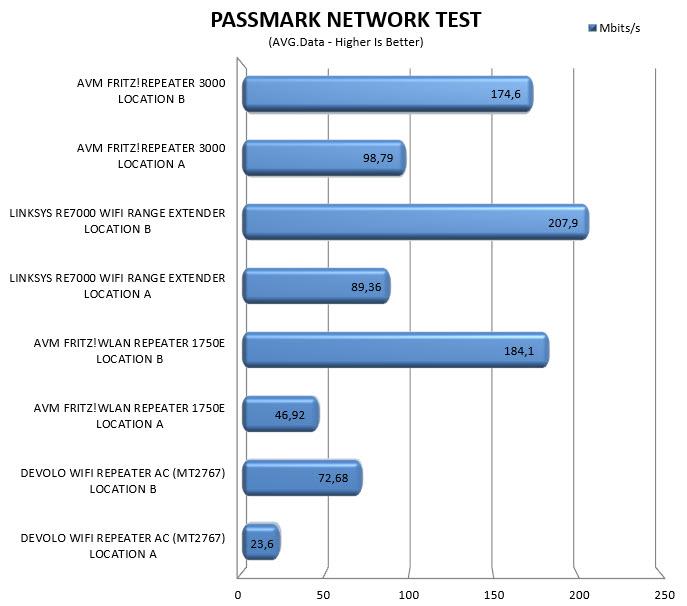
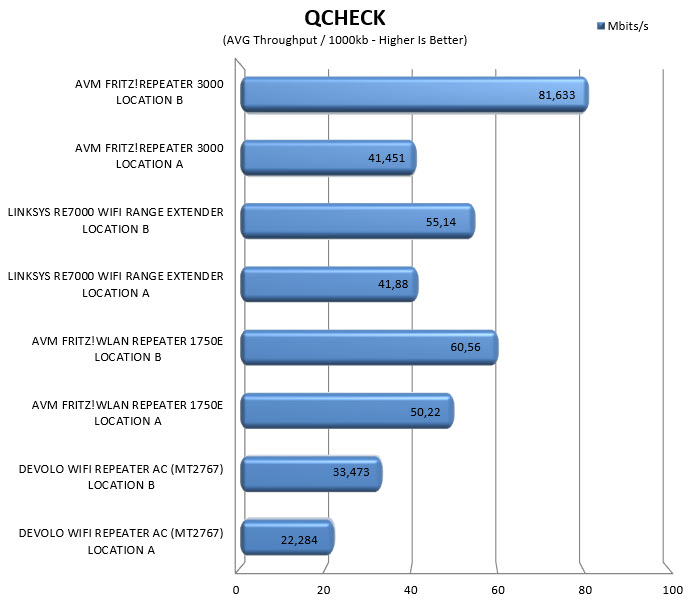

CONCLUSION
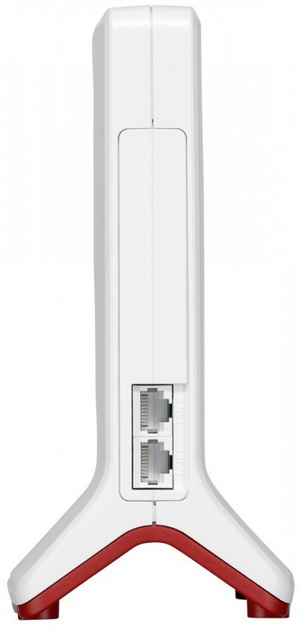
AVM has made a name for themselves over the years and the FRITZ!Repeater 3000 is yet another product that proves why that is. It’s not only the best all-around Wi-Fi repeater to ever pass from our lab (the glossy plastic enclosure is good but still we’d like to see even better things from AVM in terms of enclosure quality – just like with their modem/routers) but it’s also the best in terms of overall performance. This performance difference however comes at a cost (side aside) but even though power consumption is also increased compared to its competition I seriously doubt 1-2W more will deter potential buyers from getting the FRITZ!Repeater 3000. Of course, just like with most things out there there’s always room for improvement so had AVM used larger internal or external antennas we may had seen even better results. As for the FRITZ!OS and the Mesh function well our screenshots really speak for themselves and although at times the plethora of features may actually confuse some users it’s always better to have them and not need them (or know how to use them) than not have them.
The international version of the FRITZ!Repeater 3000 by AVM currently retails for 142.93Euros inside the EU (Amazon.de) and this is actually also its main drawback since for the same amount of money people can grab quite a few mid-end AC Wi-Fi routers. Still the FRITZ!Repeater 3000 is not the most expensive Wi-Fi repeater in the market (for example this was also the original asking price of the RE7000 model by Linksys) so at the end of the day it all comes down to your needs and the whether or not you own a FRITZ!Box and would like to use AVM’s Mesh Network feature. Bottom line if you want the highest performance AC Wi-Fi repeater in the market today and you care not about size or cost the FRITZ!Repeater 3000 is the one for you and that’s also why it gets our Golden Award.

PROS
- Fastest WiFi AC Performance
- Tri Band AC3000 Model (2x5GHz / 1x2.4GHz)
- Supports MU-MIMO & Beamforming
- 2 Gigabit Ethernet Ports
- Ideal Location LED
- FRITZ!OS Web Interface
- Mesh Network Feature
CONS
- Price (For Some)
- Size (For Some)
- Power Consumption (For Some)

 O-Sense
O-Sense





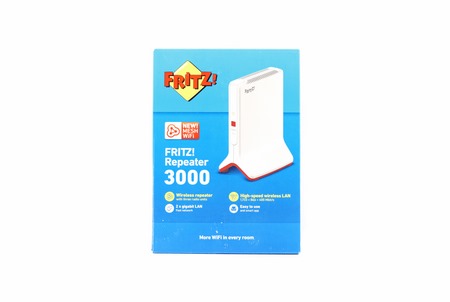
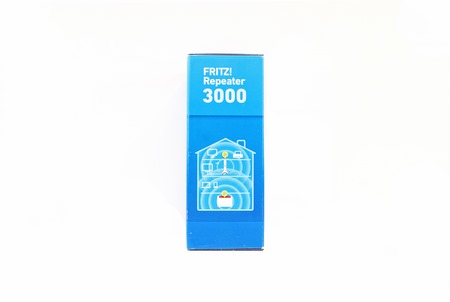

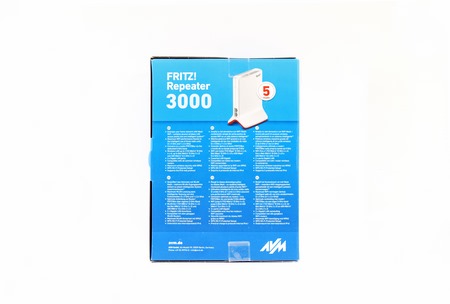
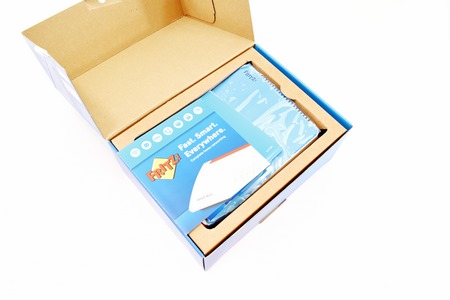
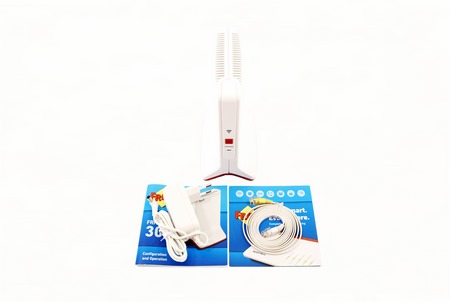
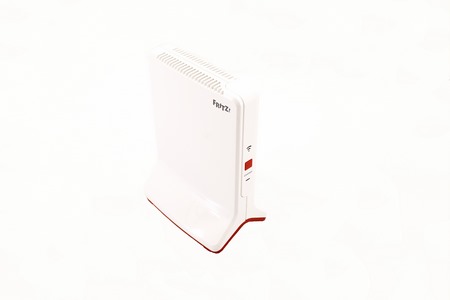
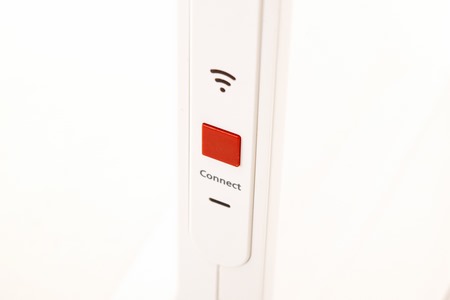

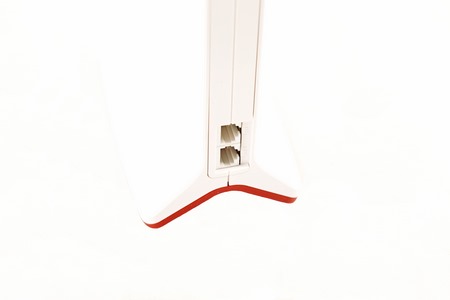
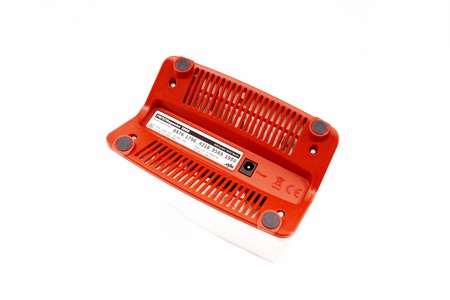
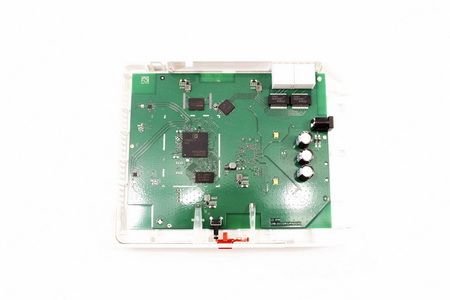
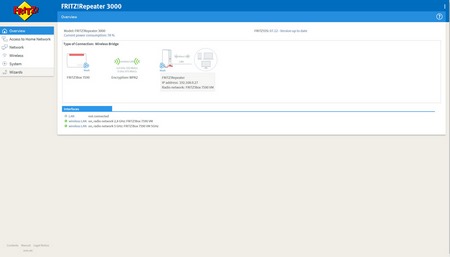
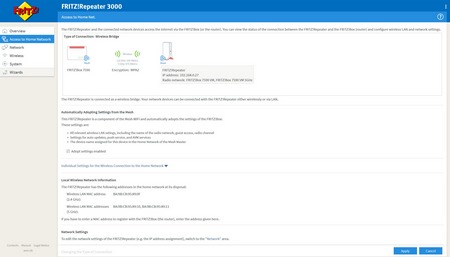
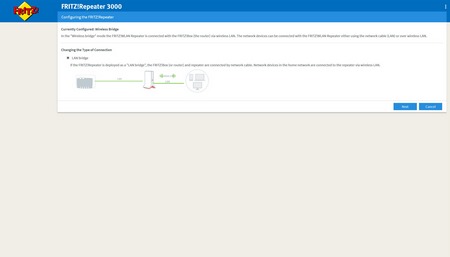


.png)

